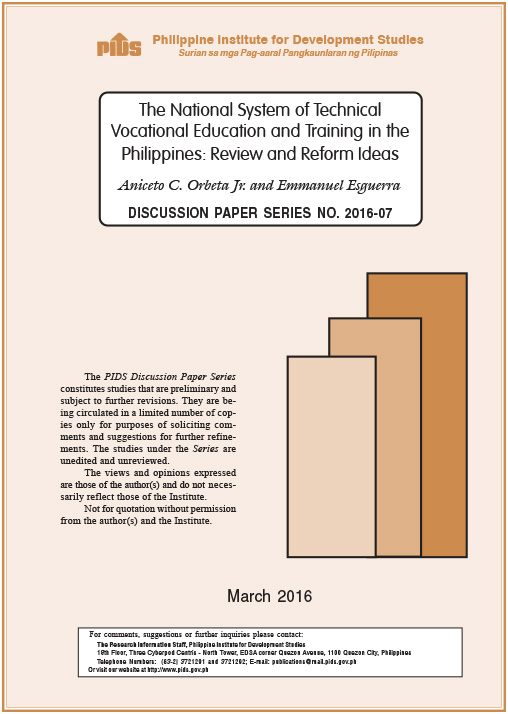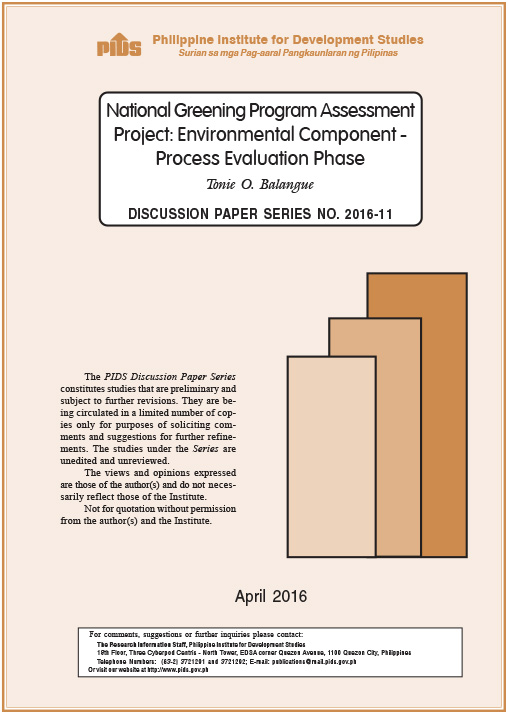Conclusion
ENSURING water supply, according to experts, is critical to help farmers cope with the ill effects of El Niño. Experts, such as Dr. Roehlano Briones of the Philippine Institute for Development Studies (Pids), pushed for reforms in the water sector.
In fairness to the government, Briones said, it has a number of El Niño mitigation measures in place. These include the "quick turnaround” scheme, which calls on rice farmers to plant a third crop, as well as cloud-seeding operations.
But the most crucial, experts said, is finding ways on how to deal with water availability considering the decline in resources.
"Problems [like El Niño] can recur and, in the long run, we will be facing greater demand for water, not less,” Briones said.
"But then, we also know that water-resource availability is not increasing but probably declining because of the state of our watersheds. Also, the availability of water will be less, rather than more stable, in the years to come because of climate change,” he added.
The government’s priority, Briones said, is to ensure the efficiency of the country’s irrigation system. A Pids study earlier noted that the actual irrigated areas for most irrigation systems in the country had all been consistently below the target.
The study, titled "Appraisal of Methodology in Estimating Irrigable Areas and Process of Evaluating Feasibility of National Irrigation Administration Projects,” said this has been due mainly to "overestimation” of irrigable areas by not fully accounting for built-up areas or urbanization, flooded areas during the wet season and elevated areas that cannot be reached by gravity irrigation systems.
Briones added that it also does not help that the country’s watersheds are already denuded. Figures from the United Nations Food and Agriculture Organization showed that the country’s forest cover declined to around 20 percent in 2007, from 90 percent in 1934.
Rolando Dy, executive director of the University of Asia and the Pacific’s Center for Food and Agribusiness, said consumers must also be encouraged to eat farm products that require less water to produce.
"We Filipinos should also partly change our consumption habits. Demand for water will only continue to rise if we continue to eat rice, which is water-intensive,” Dy said.
He said Filipino consumers may consider eating banana and camote, which do not require a lot of water to grow.
To produce 1 kilogram of palay, Dy noted that farmers use 5 cubic meter (cum) of irrigation water. "So for 4,000 kg of palay, a farmer must use 20,000 cum.”
Dy said the government must seriously consider conserving water in small farm reservoirs–a strategy that is being done by India and Israel.
"Our terrain is suitable for small farm reservoirs but we have very few of those,” he said.
Despite all this, Philippine farm output manages to post growth but the increases are below the targets indicated in the Aquino administration’s blueprint dubbed as the Philippine Development Plan 2011-2016. Data from the Philippine Statistics Authority (PSA) showed that that local farm production grew 1.78 percent in the first quarter of the year.
The PSA said this is largely due to the good performance of the crops subsector which accounted for more than half of farm output in January to March. Figures showed that the output of the crops subsector rose by 1.65 percent during the period.
But PSA data indicated that rice production declined by 6.09 percent, to 4.75 million MT (MMT), from 5.06 MMT in the fourth quarter of 2014. In its latest forecast, the PSA said palay output could decline in the second quarter of the year due to the prolonged dry spell.
The country’s palay production could go down by 4.21 percent to 3.9 MMT in April to June this
year, from 4.07 MMT recorded in the second quarter of 2014. The PSA said harvest area in the second quarter may contract by 2.29 percent to 918,000 hectares, while yield may go down to 4.25 MT per hectare, from 4.34 MT per hectare.
Corn output is also expected to go down by 14.38 percent to 1.02 MMT, as harvest area is expected to decline by 13.84 percent to 335,810 hectares.
Alcala said that there will be enough food despite the threat posed by the El Niño weather phenomenon. "Hindi po tayo mananalangin na lang para maipatupad ang mga interventions natin sa El Niño [We will not just pray; we will continue to implement our El Niño mitigation efforts].”
Related Posts
Publications
Press Releases
Video Highlights
[No related items]
Infographics
[No related items]





